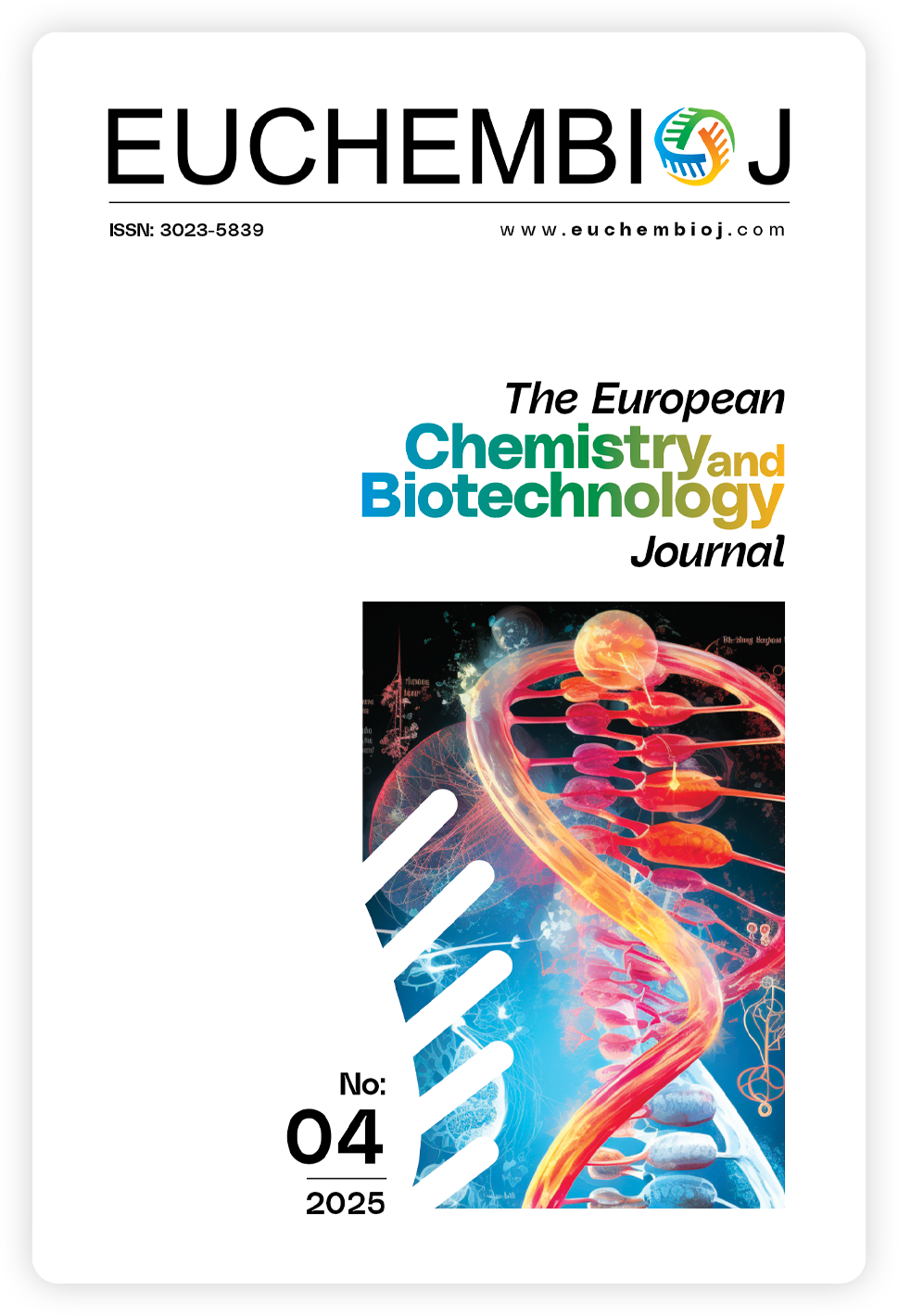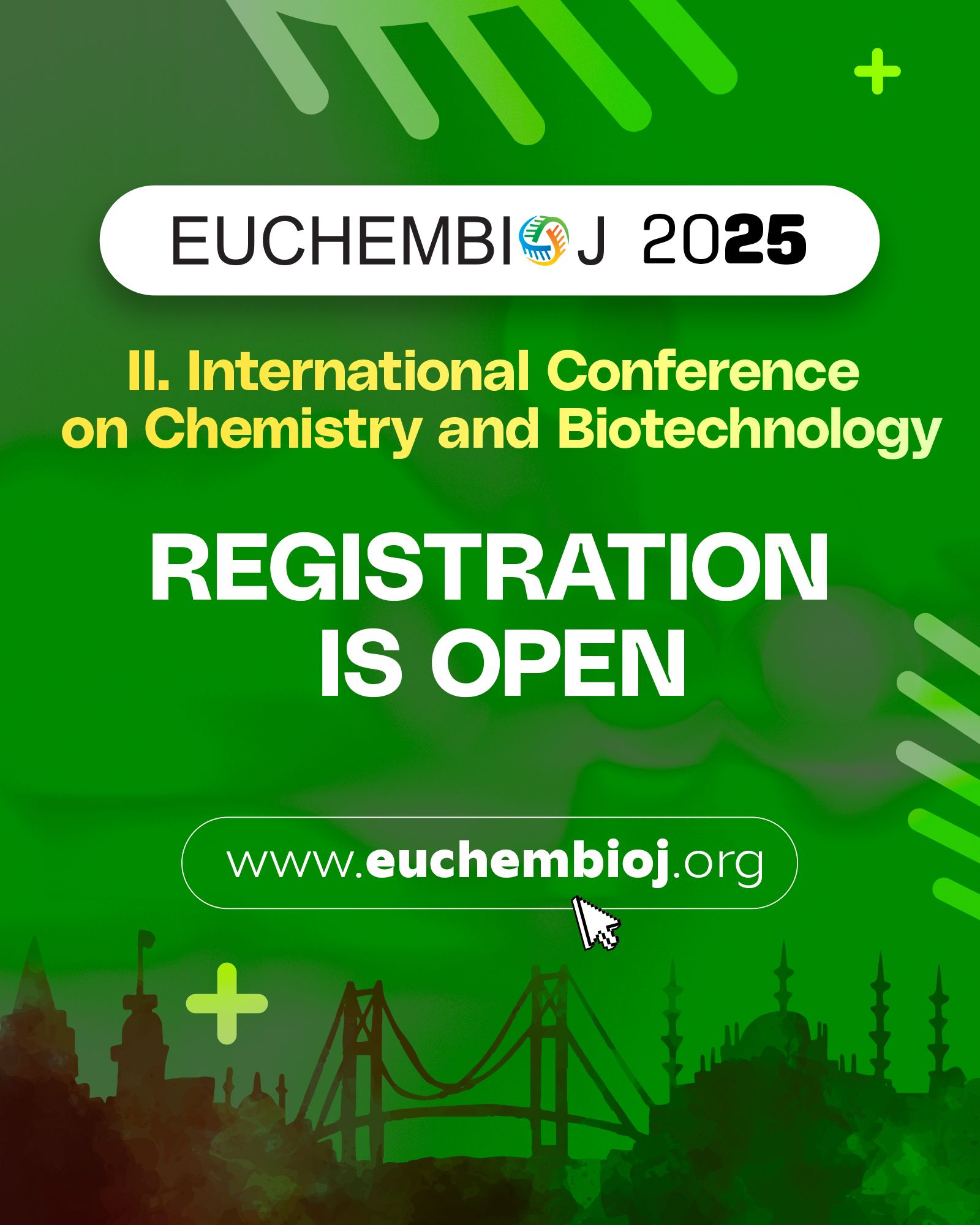Seashell-based bioceramics for advanced electrospun tissue scaffolds
DOI:
https://doi.org/10.62063/ecb-49Keywords:
bioceramic, tissue scaffold, electrospinning, gelatin, polyvinyl alcohol.Abstract
The demand for tissue scaffolds to support the repair, regeneration, and restoration of damaged tissues is rapidly growing. Scaffolds fabricated using the electrospinning technique are particularly significant in tissue engineering due to their ability to provide micro- to nano-scale porosity and a large surface area. This study focuses on developing tissue scaffolds with enhanced cell adhesion, biodegradability, and tensile strength by employing aqueous solutions of polyvinyl alcohol (PVA), a biocompatible and biodegradable synthetic polymer; gelatin (GEL), a natural polymer that offers binding sites conducive to cell adhesion and differentiation; and synthesized bioceramics, all integrated through the electrospinning process. Composite tissue scaffolds were engineered by incorporating 1% to 3% GEL into the PVA solution, followed by the addition of 1% bioceramics to the 1% GEL-enriched PVA. The composite formulation not only emulates the extracellular matrix as a biomimetic strategy but also goes beyond merely enhancing ossification. Comprehensive structural, morphological, mechanical, and thermal characterizations were conducted to analyze the properties of the scaffolds containing the synthesized bioceramics. The tensile strengths of the fabricated nanocomposites were determined to be 6.25 MPa for 10:0 (PVA:GEL), 7.45 MPa for 10:1 (PVA:GEL), 8.01 MPa for 10:3 (PVA:GEL), and 8.22 MPa for 10:1:1 (PVA:GEL:Bioceramics), respectively, indicating a progressive enhancement in mechanical properties with the incorporation of GEL and bioceramics. The results demonstrate the successful production of a potential biomaterial with ideal properties for tissue engineering applications. These composite scaffolds, providing a conducive environment for cell adhesion and exhibiting excellent mechanical properties, are anticipated to be suitable for dental applications as an intermediate layer which may support bone and connective tissue formation.
References
Altan, D., Özarslan, A. C., Özel, C., Tuzlakoğlu, K., Sahin, Y. M., & Yücel, S. (2024). Fabrication of electrospun double layered biomimetic collagen–chitosan polymeric membranes with zinc-doped mesoporous bioactive glass additives. Polymers, 16(14), 2066–2084. https://doi.org/10.3390/polym16142066 DOI: https://doi.org/10.3390/polym16142066
Aydogdu, M. O., Mutlu, B., Kurt, M., Inan, A. T., Kuruca, S. E., Erdemir, G., Sahin, Y.M., Ekren, N., Oktar, F.N., & Gunduz, O. (2019). Developments of 3D polycaprolactone/beta-tricalcium phosphate/collagen scaffolds for hard tissue engineering. Journal of the Australian Ceramic Society, 55, 849-855. https://doi.org/10.1007/s41779-018-00299-y DOI: https://doi.org/10.1007/s41779-018-00299-y
Ba Linh, N. T., Lee, K. H., & Lee, B. T. (2013). Functional nanofiber mat of polyvinyl alcohol/gelatin containing nanoparticles of biphasic calcium phosphate for bone regeneration in rat calvaria defects. Journal of Biomedical Materials Research Part A, 101(8), 2412–2423. https://doi.org/10.1002/jbm.a.34533 DOI: https://doi.org/10.1002/jbm.a.34533
Biesuz, M., Galotta, A., Motta, A., Kermani, S., Grasso, J., Vontorová, V., Tyrpekl, M., Vilémová, M., & Sglavo, V. M. (2021). Speedy bioceramics: Rapid densification of tricalcium phosphate by ultrafast high-temperature sintering. Materials Science and Engineering: C, 127, 112246. https://doi.org/10.1016/j.msec.2021.112246 DOI: https://doi.org/10.1016/j.msec.2021.112246
Buluş, E. (2017). Doğal izole edilmiş biyoseramiklerden elektrospinning yöntemi ile polimerik biyokompozit malzeme eldesi (Master’s thesis, Fen Bilimleri Enstitüsü).
Bulus, E., Sakarya Bulus, G., & Sahin, Y. M. (2020). Production and characterization of nanotechnological tape for wounds caused by diabetes. Journal of Materials and Electronic Devices, 5(1), 20–24.
Cam, M. E., Cesur, S., Taskin, T., Erdemir, G., Kuruca, D. S., Sahin, Y. M., Kabasakal, L., & Gunduz, O. (2019). Fabrication, characterization and fibroblast proliferative activity of electrospun Achillea lycaonica-loaded nanofibrous mats. European Polymer Journal, 120, 109239. https://doi.org/10.1016/j.eurpolymj.2019.109239 DOI: https://doi.org/10.1016/j.eurpolymj.2019.109239
Filippi, M., Born, G., Chaaban, M., & Scherberich, A. (2020). Natural polymeric scaffolds in bone regeneration. Frontiers in Bioengineering and Biotechnology, 8, 474. https://doi.org/10.3389/fbioe.2020.00474 DOI: https://doi.org/10.3389/fbioe.2020.00474
Gautam, S., Sharma, C., Purohit, S. D., Singh, H., Dinda, A. K., Potdar, C. F., Chou, P. D., & Mishra, N. C. (2021). Gelatin-polycaprolactone-nanohydroxyapatite electrospun nanocomposite scaffold for bone tissue engineering. Materials Science and Engineering: C, 119, 111588. https://doi.org/10.1016/j.msec.2020.111588 DOI: https://doi.org/10.1016/j.msec.2020.111588
Gunduz, O., Sahin, Y. M., Agathopoulos, S., Ağaoğulları, H., Gökçe, E. S., Kayali, C., Aktas, B., Ben-Nissan, B., & Oktar, F. N. (2013). Nano calcium phosphate powder production through chemical agitation from Atlantic deer cowrie shells (Cypraea cervus Linnaeus). Key Engineering Materials, 587, 80–85. https://doi.org/10.4028/www.scientific.net/KEM.587.80 DOI: https://doi.org/10.4028/www.scientific.net/KEM.587.80
Hernández, G. R., Valdez, H. A., Arango-Ospina, M., Delgado, J. F., Aguilar-Rabiela, A. E., Gorgojo, J. P., Zhang, H., Beltrán, A.M., Boccaccini, A.R., & Sánchez, M. L. (2024). PVA-gelatine based hydrogel loaded with astaxanthin and mesoporous bioactive glass nanoparticles for wound healing. Journal of drug delivery science and technology, 101, 106235. https://doi.org/10.1016/j.jddst.2024.106235 DOI: https://doi.org/10.1016/j.jddst.2024.106235
Hejazi, F., Bagheri‐Khoulenjani, S., Olov, D., Zeini, A., Solouk, A., & Mirzadeh, H. (2021). Fabrication of nanocomposite/nanofibrous functionally graded biomimetic scaffolds for osteochondral tissue regeneration. Journal of Biomedical Materials Research Part A, 109(9), 1657–1669. https://doi.org/10.1002/jbm.a.37161 DOI: https://doi.org/10.1002/jbm.a.37161
Heydary, H. A., Karamian, E., Poorazizi, E., Heydaripour, J., & Khandan, A. (2015). Electrospun of polymer/bioceramic nanocomposite as a new soft tissue for biomedical applications. Journal of Asian Ceramic Societies, 3(4), 417–425. https://doi.org/10.1016/j.jascer.2015.09.003 DOI: https://doi.org/10.1016/j.jascer.2015.09.003
Hong, J., Yeo, M., Yang, G. H., & Kim, G. H. (2019). Cell-electrospinning and its application for tissue engineering. International Journal of Molecular Sciences, 20(24), 6208. https://doi.org/10.3390/ijms20246208 DOI: https://doi.org/10.3390/ijms20246208
Hoque, M. E., Sakinah, N., Chuan, Y. L., & Ansari, M. N. M. (2014). Synthesis and characterization of hydroxyapatite bioceramic. International Journal of Scientific Engineering and Technology, 3(5), 458–462.
Howard, D., Buttery, L. D., Shakesheff, K. M., & Roberts, S. J. (2008). Tissue engineering: Strategies, stem cells and scaffolds. Journal of Anatomy, 213(1), 66–72. https://doi.org/10.1111/j.1469-7580.2008.00878.x DOI: https://doi.org/10.1111/j.1469-7580.2008.00878.x
Jazayeri, H. E., Lee, S.-M., Kuhn, L., Fahimipour, F., Tahriri, M., & Tayebi, L. (2020). Polymeric scaffolds for dental pulp tissue engineering: A review. Dental Materials, 36(2), e1–e10. https://doi.org/10.1016/j.dental.2019.11.005 DOI: https://doi.org/10.1016/j.dental.2019.11.005
Keçeciler‐Emir, C., Başaran‐Elalmiş, Y. M., Şahin, Y., Buluş, E., & Yücel, S. (2023). Fabrication and characterization of chlorhexidine gluconate loaded poly (vinyl alcohol)/45S5 nano‐bioactive glass nanofibrous membrane for guided tissue regeneration applications. Biopolymers, 114(10), e23562. https://doi.org/10.1002/bip.23562 DOI: https://doi.org/10.1002/bip.23562
Linh, N. T., Min, Y. K., Song, H. Y., & Lee, B. T. (2010). Fabrication of polyvinyl alcohol/gelatin nanofiber composites and evaluation of their material properties. Journal of Biomedical Materials Research Part B: Applied Biomaterials, 95(1), 184–191. https://doi.org/10.1002/jbm.b.31701 DOI: https://doi.org/10.1002/jbm.b.31701
Mazumder, S., Nayak, A. K., Ara, T. J., & Hasnain, M. S. (2019). Hydroxyapatite composites for dentistry. In Applications of Nanocomposite Materials in Dentistry (pp. 123–143). https://doi.org/10.1016/B978-0-12-813742-0.00007-9 DOI: https://doi.org/10.1016/B978-0-12-813742-0.00007-9
Perez-Puyana, V., Jiménez-Rosado, M., Romero, A., & Guerrero, A. (2018). Development of PVA/gelatin nanofibrous scaffolds for tissue engineering via electrospinning. Materials Research Express, 5(3), 035401. https://doi.org/10.1088/2053-1591/aab164 DOI: https://doi.org/10.1088/2053-1591/aab164
Razzaq, A., Khan, Z. U., Saeed, A., Shah, K. A., Khan, N. U., Menaa, B., Iqbal, H., & Menaa, F. (2021). Development of cephradine-loaded gelatin/polyvinyl alcohol electrospun nanofibers for effective diabetic wound healing: In vitro and in vivo assessments. Pharmaceutics, 13(3), 349. https://doi.org/10.3390/pharmaceutics13030349 DOI: https://doi.org/10.3390/pharmaceutics13030349
Sadeghi, A., Pezeshki-Modaress, M., & Zandi, M. (2018). Electrospun polyvinyl alcohol/gelatin/chondroitin sulfate nanofibrous scaffold: Fabrication and in vitro evaluation. International Journal of Biological Macromolecules, 114, 1248–1256. https://doi.org/10.1016/j.ijbiomac.2018.04.002 DOI: https://doi.org/10.1016/j.ijbiomac.2018.04.002
Sahin, Y. M. (2019). Natural nanohydroxyapatite synthesis via ultrasonication from Donax trunculus bivalve sea shells and production of its electrospun nanobiocomposite. Acta Physica Polonica A, 135(5), 1093–1096. https://doi.org/10.12693/APhysPolA.135.1093 DOI: https://doi.org/10.12693/APhysPolA.135.1093
Sahin, Y. M., Orman, Z., & Yucel, S. (2018). In vitro studies of α-TCP and β-TCP produced from Clinocardium ciliatum seashells. Journal of the Australian Ceramic Society, 56, 477–488. https://doi.org/10.1007/s41779-019-00355-1 DOI: https://doi.org/10.1007/s41779-019-00355-1
Şahin, Y. M., Orman, Z., & Yücel, S. (2018). A simple chemical method for conversion of Turritella terebra sea snail into nanobioceramics. Journal of Ceramic Processing Research,19(6),492-498. ISSN: 1229-9162
Santhosh, S., & Balasivanandha Prabu, S. (2013). Thermal stability of nano hydroxyapatite synthesized from sea shells through wet chemical synthesis. Materials Letters, 97, 121–124. https://doi.org/10.1016/j.matlet.2013.01.081 DOI: https://doi.org/10.1016/j.matlet.2013.01.081
Sengor, M., Ozgun, A., Corapcioglu, G., Ipekoglu, M., Garipcan, B., Ersoy, N., & Altintas, S. (2018). Core-shell PVA/gelatin nanofibrous scaffolds using co-solvent, aqueous electrospinning: Toward a green approach. Journal of Applied Polymer Science, 135(32), 46582. https://doi.org/10.1002/app.46582 DOI: https://doi.org/10.1002/app.46582
Song, W., Markel, D. C., Wang, T., Shi, G., Mao, T., & Ren, W. (2012). Electrospun polyvinyl alcohol–collagen–hydroxyapatite nanofibers: A biomimetic extracellular matrix for osteoblastic cells. Nanotechnology, 23(11), 115101. https://doi.org/10.1088/0957-4484/23/11/115101 DOI: https://doi.org/10.1088/0957-4484/23/11/115101
Tüzün, E. (2023). Synthesis of novel antioxidant carboxymethylcellulose nanocomposites for Cu–Ni–Mo-based steel foams. Cellulose, 30(14), 8753-8768. https://doi.org/10.1007/s10570-023-05436-w DOI: https://doi.org/10.1007/s10570-023-05436-w
Qiao, K., Zheng, Y., Guo, S., Tan, J., Chen, X., Li, J., Xu, D., & Wang, J. (2015). Hydrophilic nanofiber of bacterial cellulose guided the changes in the micro-structure and mechanical properties of nf-BC/PVA composites hydrogels. Composites science and technology, 118, 47-54. https://doi.org/10.1016/j.compscitech.2015.08.004 DOI: https://doi.org/10.1016/j.compscitech.2015.08.004
Xie, W., Fu, X., Tang, F., Mo, Y., Cheng, J., Wang, H., & Chen, X. (2019). Dose-dependent modulation effects of bioactive glass particles on macrophages and diabetic wound healing. Journal of Materials Chemistry B, 7(6), 940–952. https://doi.org/10.1039/C8TB02938E DOI: https://doi.org/10.1039/C8TB02938E
Yelten-Yilmaz, A., & Yilmaz, S. (2010). Wet chemical precipitation synthesis of hydroxyapatite (HA) powders. Ceramics International, 44(8), 9703–9710. https://doi.org/10.1016/j.ceramint.2018.02.201 DOI: https://doi.org/10.1016/j.ceramint.2018.02.201
Zhang, H., Xiong, Y., Dong, L., & Li, X. (2021). Development of hierarchical porous bioceramic scaffolds with controlled micro/nano surface topography for accelerating bone regeneration. Materials Science and Engineering: C, 130, 112437. https://doi.org/10.1016/j.msec.2021.112437 DOI: https://doi.org/10.1016/j.msec.2021.112437
Zou, Y., Zhang, L., Yang, F., Zhu, M., Ding, F., Lin, Z., Wang, Z., & Li, Y. (2018). ‘Click’ chemistry in polymeric scaffolds: Bioactive materials for tissue engineering. Journal of Controlled Release, 273, 160–179. https://doi.org/10.1016/j.jconrel.2018.01.023 DOI: https://doi.org/10.1016/j.jconrel.2018.01.023
Published
How to Cite
Issue
Section
License

This work is licensed under a Creative Commons Attribution-NonCommercial 4.0 International License.








